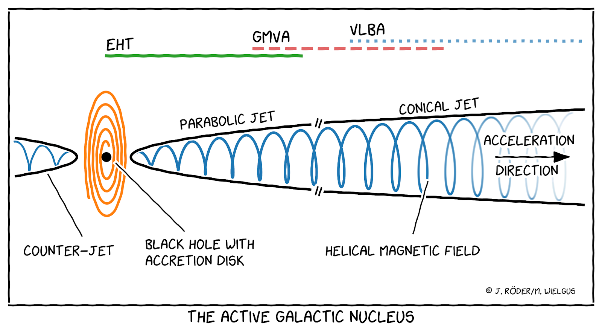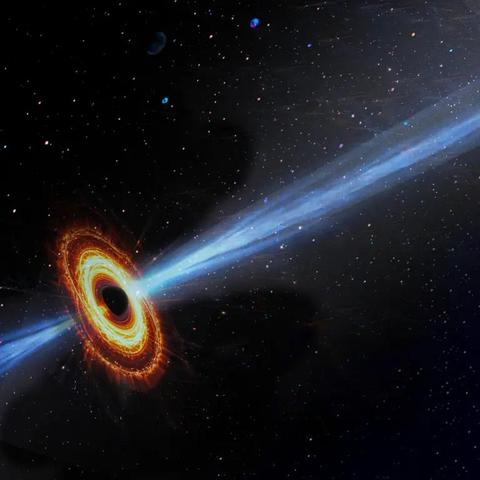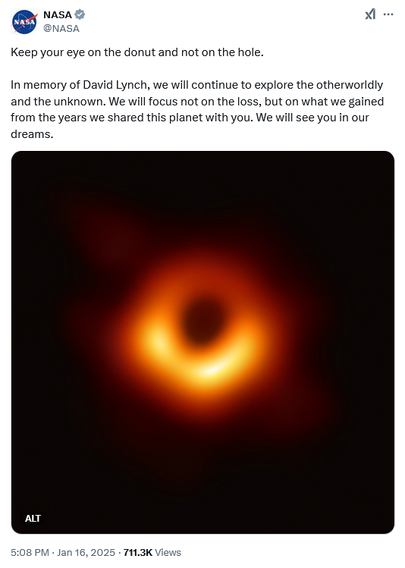This image shows the region around the Milky Way's central supermassive black hole, known as Sagittarius A* (Sgr A*), in infrared (orange and purple) and X-ray light (blue). The image is scanned from left to right and the data are transformed into sound. The brightness of the objects is represented by the volume, while the vertical positions of the sources in the image are mapped to musical pitches. X-rays are played with a soft synthesizer and the infrared data are heard as bass notes and plucked sounds. The brightest region in the middle of the image (and hence the loudest) is where Sgr A* the black hole, resides. It is within this area that the Event Horizon Telescope was able to peer to obtain the first image of Sgr A* itself.
About the Sound:
The image is scanned from left to right with brightness controlling the volume.
The vertical position is mapped to musical pitches with higher pitches toward the top.
The mid-IR layer is limited to a low range and played on a bass.
The X-ray layer is limited to a high range and played on a soft synth.
The brightest regions in the X-ray image (including Sgr A*) are highlighted by increasing the brightness of the synth's sound.
Listen for a peak at the location of the supermassive black hole Sagittarius A* at the 14 second mark.
The near IR layer covers the full pitch range.
The stars visible in the near-IR image are played on a plucked distorted synth.
The stereo pan follows the scan from left to right.
https://chandra.harvard.edu/photo/2022/sgra/animations.html
#space #galaxy #milkyway #astrophotography #photography #science #nature #EHT #CHANDRA #NASA




